Kiwis
For those who come too early...new data on berry demand AFTER spring
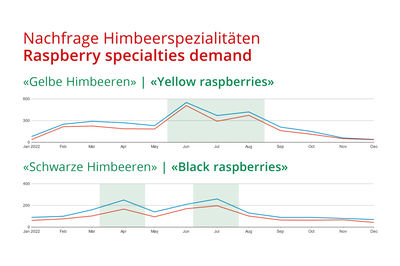
Traditionally, soft fruit plants are delivered to sales outlets and sold off in early spring. Depending on the season, there may or may not be additional deliveries. Using Google data, we show that the demand for certain types of fruit (or the corresponding terms) is sometimes continuous throughout the year or that there is a second peak after spring when the fruit in question is ripe. But can this effect also be demonstrated in specific plant sales? Are we perhaps systematically selling many...
Read moreKiwi young plants – fuzzy kiwi varieties for Central Europe
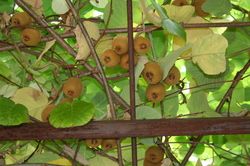
As a fruit, the kiwi – here we mean the large-fruited fuzzy kiwi Actinidia deliciosa – has a comparatively short history in Europe. It was not until the 1950s, for example, that the first kiwi fruit was imported into Britain. The country of origin, how could it be otherwise, was then and still is New Zealand. Today, it is hard to imagine a fruit shop or supermarket without kiwis and they are available year-round. Varieties that used to be found exclusively growing in plantations are...
Read moreKiwiberry® – the latest generation of hardy kiwi young plants

When you hear the word 'kiwi', you almost inevitably think of the large, green-brown, hairy fruits from the supermarket, which are now available all year round. It doesn't matter whether it's the green- or yellow-fleshed variety. Both look quite similar at first glance.
Our range of hardy kiwi young plants, on the other hand, has a much greater variety of shapes and colours. In the portrait article on hardy kiwis we have already acquainted you to this equally fascinating and easy-to-grow group of...
Read moreThe demand for kiwi plants - and the structure of the ideal assortment
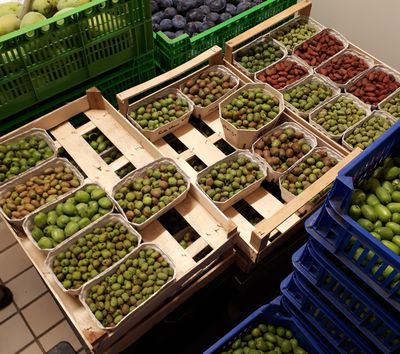
How exactly should a kiwi assortment be composed? Or more importantly and more precisely: which kiwi plants are really in demand by hobby gardeners? In this article we try to answer this question more accurately based on actual consumer demand.
Read moreMini kiwis – a plant portrait

Who doesn't know the kiwi fruit from the supermarket? With its green or even yellow flesh and brown, slightly hairy skin, with its typical sour-sweet taste and exotic aroma?
But who knows the small-fruited relative of the kiwi fruit, the mini kiwi? Nurserymen and hobby gardeners, but also people interested in fruit will have heard of the mini kiwi, sometimes also called kiwi berry. But in the grocery store you will usually look in vain for them. If at all, the mini kiwi is only to be found in...
Read moreThe production of kiwi plants outdoors
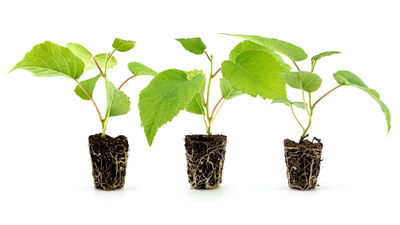
Since kiwi plants are mainly cultivated in protected areas, the title sounds a bit strange at first. However, a coincidence that occurred while producing kiwi plants at our partner company Lubera at the Bad Zwischenahn site has shown that this idea is not as far-fetched as it might seem at first glance.
Read moreThe exclusive Lubera Edibles assortment poster – all 'edible' young plants at a glance

As in so many industries and areas of everyday life, the trend is moving towards more online-based advertising and paperless communication. However, at the moment, we do not want to do without print media entirely. Last autumn, for example, we were already able to present our current young plant catalogue for 2020. Many of you have already received the printed version and at the same time our young plant catalogue is also available at luberaedibles.com in the download area.
Read more5 reasons for breeding fruit and berry plants for home gardens
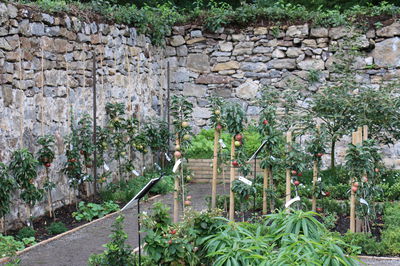
With Lubera® and Lubera® Edibles we are asked again and again, why we would have our own elaborate breeding programmes when there are so many fruit and berry breeding programmes worldwide from which one could use. Our short answer is this: because worldwide there are no fruit and berry breeding programmes that are especially geared towards the home garden. Almost the entire breeding efforts of universities, research stations and increasingly also of private breeders are aimed at...
Read moreThe availability list of Lubera Edibles – more up to date, more complete and clearer
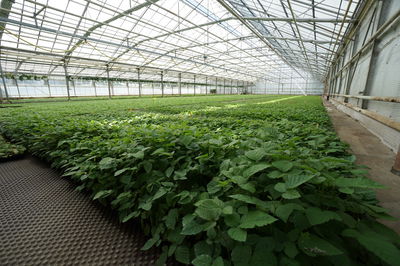
With the founding of our young plant distribution company Lubera Edibles GmbH, we have not only aligned our marketing concept and our online presence with that of our sister company Lubera, we have also taken over key elements from the former distribution company. One of these key elements was, is and remains the availability list. Previously only updated from time to time and delivered upon customer request, the newly revised availability list with a similar layout is now always accessible on...
Read moreOur assortment of 'edible' young plants

As the new company name, Lubera Edibles®, already suggests, we are expanding our range of young plants from classic soft fruits, such as raspberries, blackberries or blueberries, to anything that can be consumed in any way. This includes edible fruits like kiwis, apples and pears. Or edible roots such as horseradish, Jerusalem artichoke or potato. But also edible leaves, petioles, flowers such as sea kale, tea or rhubarb. We would like to introduce our most important groups of crops in the...
Read more